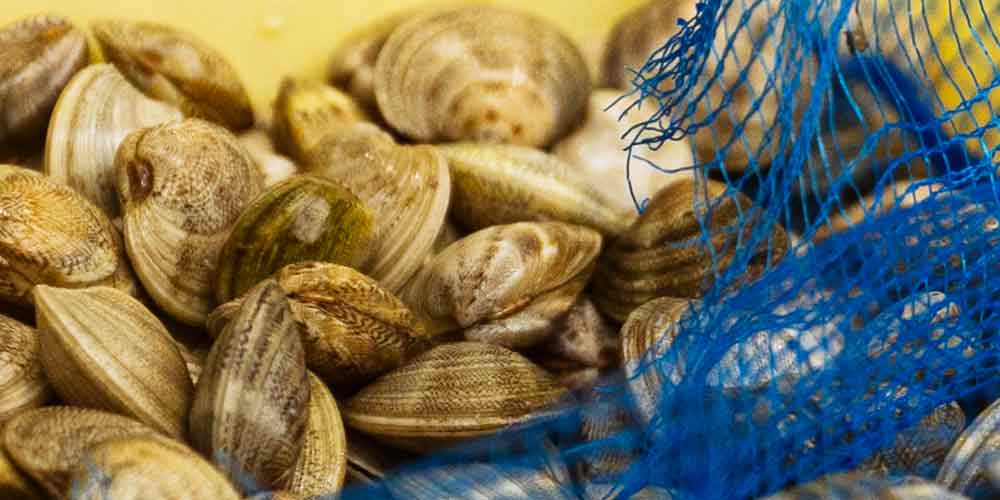Among the excellences of Cattolica, the clam stands out. This small saltwater mollusk (chamelea gallina) is a marine bivalve of the family Veneridae, characterized by concentric ridges on the shell and its whitish, cream or pale yellow colour, with three red-brown radiating rays. Unlike the cross-cut carpet shell (ruditapes decussatus), which is bigger and meatier, this kind of smaller clam owns a unique taste, surely more rich in flavour.
The clam is central to both local cuisine and local economy: indeed, thanks to the development of this kind of fishing, the city has seen a large economic growth since the 1980’s. The clam is called in the local dialect puracia (italianized poveraccia) which could be translated as “poor” or “poor thing”. Since it can be picked up on the water edge during low tide, in the past people were used to go to the beach to collect clams, and also grooved razor shells (solen marginatus), so as to feed the entire family with little effort. Therefore, the dialect name, as it was considered a food of the poor people. Cattolica’s clam is the main ingredient of many dishes of the local cuisine, such as the classic spaghetti alla marinara (seafood spaghetti, that can be white or with red sauce), or the sophisticated seafood risotto. It is sometimes cooked in a seasoned red sauce with polenta morbida (soft cornemal mush), or can be served as a warm appetizer, the typical vongole alla marinara: the opened clams are stir-fried with olive oil, seasoned with a mix of black pepper, garlic and parsley, and served with slices of toasted bread. Docked in line in the old part of the Harbour, it is possible to admire the typical clam Fishing Boats, characterized by a big rust red rake. The Boats are equipped with a turbo blower,
necessary to lift the seabed in which the clams live, approximately 15cm below the sand surface. Finally, thanks to the Dredger, the clams are collected and drained from the sand, then packed in bags. Until the mid 1950’s an iron tool, called ferro da vongole (iron for clams) in Italian and smenacùl in dialect, was used, composed by an half-circle wire net, connected to a wooden handle. In the past the net was made of hemp, and the sailors used to bring it back home everyday to let it dry in front of the chimney. Today, an example of the smenacùl is preserved in the City Museum.

